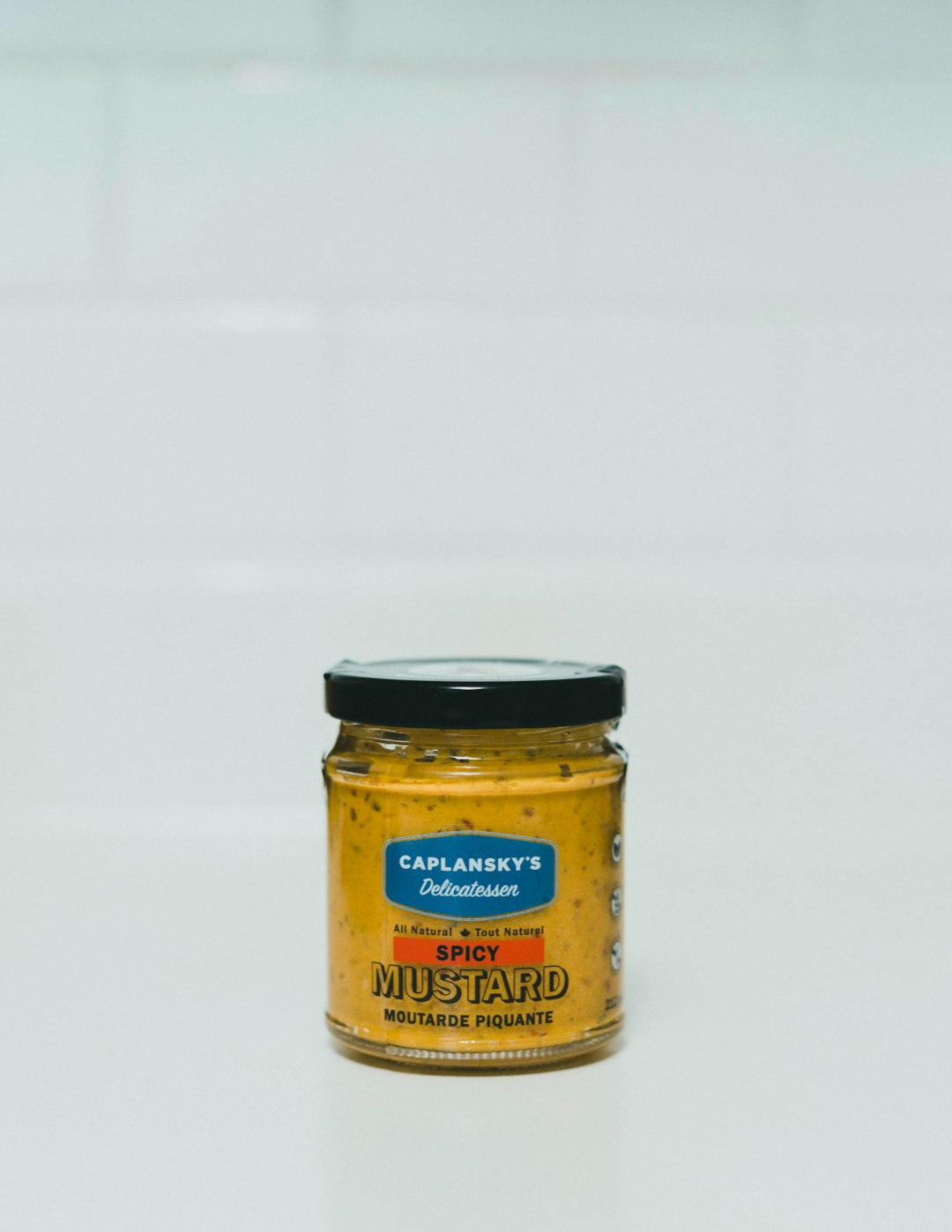Table of Contents
- Introduction
- Ingredients needed for Honey Mustard Baked Chicken
- Step-by-step guide to preparing and marinating the chicken
- Baking process and recommended oven settings
- How to serve Honey Mustard Baked Chicken with complementary sides
- Nutritional benefits and variations of the recipe
- Flavor profile analysis: Benefits of using honey and mustard
- Common mistakes to avoid while preparing Honey Mustard Baked Chicken
- Cooking tips for achieving the perfect balance of flavors in the dish
- Conclusion
- Frequently Asked Questions
Introduction
Transform Your Dinner Routine with Irresistibly Delicious Honey Mustard Baked Chicken
Looking to break free from the monotonous meal cycle? Dive into the world of tantalizing flavors with our Honey Mustard Baked Chicken, a dish designed to dazzle your taste buds with minimal effort. Crafted for culinary enthusiasts and beginners alike, this recipe offers a fantastic fusion of sweet and savory that will elevate your dinner game.
Begin your culinary journey with a few simple ingredients found in most kitchens:
- 4 pieces of chicken breast
- 2 tablespoons of honey
- 2 tablespoons of Dijon mustard
- 1 tablespoon of olive oil
- Salt and pepper to taste
With an ingredients list this simple, you’ll wonder why you haven’t tried it sooner!
Join us as we guide you through each step, ensuring that your chicken is not just baked, but transformed into a mouth-watering masterpiece. Eager to get started? Read on and let the irresistible aroma of Honey Mustard Baked Chicken lead the way to your new favorite meal.
Ingredients needed for Honey Mustard Baked Chicken
To prepare a delightful Honey Mustard Baked Chicken, you’ll need a selection of simple yet flavorful ingredients. Starting with the main component, choose bone-in or boneless chicken thighs, which are juicy and hold the marinade well. You will also need Dijon mustard, known for its smooth texture and tangy taste, that provides a refined backbone to the dish. Complementing the mustard, use honey to add a natural sweetness, balancing the sharpness of the mustard effectively.
Olive oil is essential for adding richness and ensuring that the chicken remains moist during baking. Additionally, garlic cloves bring in a touch of pungent warmth, enhancing the overall aroma. Season the mixture with salt and freshly ground black pepper to taste, ensuring a well-rounded flavor profile. If you’d like an extra layer of taste, you can add a hint of cayenne pepper for some heat or a sprinkle of paprika for a smoky depth.
Optional ingredients to personalize the dish further include fresh herbs like rosemary or thyme, which can be sprinkled on top before baking to infuse the chicken with an earthy fragrance. With these ingredients, you can create a mouthwatering and satisfying meal that will be a hit at any dinner table.
Step-by-step guide to preparing and marinating the chicken
To prepare Honey Mustard Baked Chicken, start by selecting quality chicken pieces, such as thighs or breasts, depending on your preference. Begin by patting the chicken dry with paper towels to ensure the marinade adheres well. Next, prepare the marinade by mixing together 1/3 cup of honey, 1/3 cup of Dijon mustard, two tablespoons of olive oil, and two cloves of minced garlic in a bowl. Add salt and pepper to taste. Once combined, set aside.
Place the chicken pieces into a large Ziploc bag or a shallow dish. Pour the marinade over the chicken, ensuring each piece is evenly coated. Seal the bag or cover the dish with plastic wrap. Allow the chicken to marinate in the refrigerator for at least two hours, although leaving it overnight will yield a more intense flavor. During this time, the chicken will absorb the tangy sweetness of the honey mustard mixture, enhancing its taste.
Once marinated, preheat your oven to 375°F (190°C) to prepare for baking. Arrange the chicken pieces on a baking sheet lined with parchment paper or a lightly greased baking dish. Follow upcoming steps to bake the chicken to perfection, capturing all the delicious flavors of the marinade.
Baking process and recommended oven settings
When baking honey mustard chicken, achieving the perfect blend of flavors and juiciness depends on the right oven settings and process. To start, preheat your oven to 375°F (190°C), a temperature that ensures the chicken cooks evenly without drying out. While the oven is heating, prepare your chicken by marinating it in a mixture of honey, mustard, garlic, and possibly some herbs for added flavor. This marinade not only infuses the chicken with taste but also helps retain moisture during baking.
Once the oven is ready, place the marinated chicken pieces in a baking dish, ensuring they are laid out in a single layer for even cooking. Cover the dish with aluminum foil to prevent excessive browning while maintaining moisture. Bake for about 25-30 minutes. In the last 10 minutes of cooking, remove the foil to allow the honey mustard glaze to caramelize slightly.
An internal temperature of 165°F (74°C) is required to ensure the chicken is safely cooked through. Using a meat thermometer can help you avoid overbaking. Let the chicken rest for a few minutes after baking to allow juices to redistribute. Following these guidelines will result in a dish that is both flavorful and tender.
How to serve Honey Mustard Baked Chicken with complementary sides
Serving Honey Mustard Baked Chicken can be an art when you want to create a memorable dining experience. This dish pairs well with a variety of sides that complement its rich, tangy flavor profile. An ideal serving suggestion includes a portion of creamy mashed potatoes, whose smooth texture contrasts beautifully with the juicy chicken. Adding a side of roasted vegetables, such as carrots and brussels sprouts, can enhance the meal with their sweet and earthy flavors.
For those looking to include a lighter option, a crisp green salad with a simple vinaigrette balances the dish’s richness. The acidity from the vinaigrette adds a refreshing note that cuts through the honey mustard glaze. To further delight your taste buds, consider serving a warm dinner roll that can soak up any extra sauce.
Finally, a cold glass of white wine, such as a Chardonnay or Sauvignon Blanc, complements the dish’s flavor harmoniously, offering an elegant finish to your meal. These pairings not only enhance the Honey Mustard Baked Chicken but also provide a well-rounded culinary experience for any occasion.
Nutritional benefits and variations of the recipe
Honey mustard baked chicken is not only a delightful dish but also offers nutritional benefits that make it an appealing choice for a balanced diet. Chicken is a great source of lean protein, which is crucial for muscle growth and repair. It is also rich in essential nutrients like B vitamins, particularly B6 for brain health, and selenium, a powerful antioxidant that boosts the immune system.
The honey mustard sauce contributes a pleasant blend of sweet and tangy flavors while adding some nutrients of its own. Honey is a natural sweetener that provides some antioxidants, albeit more in its raw form, while mustard is low in calories and fat.
For those looking to modify the recipe, consider swapping regular mustard for Dijon or whole-grain mustard to introduce different flavor profiles. You can also add herbs like rosemary or thyme for a fragrant twist. For a low-carb version, pair the chicken with roasted vegetables instead of rice or pasta. Alternatively, substitute honey with a sugar-free syrup for a diabetic-friendly option. With these variations, honey mustard baked chicken can easily fit into various dietary preferences while still providing a tasty, nutritious meal.
Flavor profile analysis: Benefits of using honey and mustard
The combination of honey and mustard creates a unique flavor profile that elevates any dish, especially when used as a marinade or glaze for baked chicken. Honey, with its natural sweetness and viscous texture, not only adds a rich layer of flavor but also helps to lock in moisture, ensuring the chicken remains juicy and succulent. It has the added benefit of caramelizing during cooking, providing a glossy, appetizing finish.
Mustard, on the other hand, brings a sharp, tangy flavor that cuts through the sweetness of honey, creating a balanced taste that is both refreshing and bold. Its slight heat and acidity enhance the depth of flavors, making the dish more complex and interesting to the palate. Additionally, mustard contains natural emulsifiers which help to bind the marinade ingredients together, ensuring even coverage and flavor distribution.
Using honey and mustard together not only enriches the taste experience but also offers nutritional benefits. Honey provides antioxidants while mustard seeds boast anti-inflammatory properties. Therefore, this dynamic duo not only delights the senses but also contributes to a health-conscious meal.
Common mistakes to avoid while preparing Honey Mustard Baked Chicken
When preparing Honey Mustard Baked Chicken, several common mistakes can impact the final dish’s flavor and texture. One frequent error is using low-quality mustard or honey. Opt for a high-quality Dijon or whole-grain mustard and natural honey to elevate the taste. Another mistake is skipping the marination process. Allowing the chicken to marinate ensures that the flavors are absorbed, resulting in a more flavorful dish. It’s recommended to marinate the chicken for at least an hour and preferably overnight.
Avoid overcrowding the baking dish, as this can lead to uneven cooking. Ensure that each chicken piece has enough space to cook thoroughly. Additionally, failing to preheat the oven can also affect the baking time and texture. Always preheat your oven to the recommended temperature before placing the chicken inside.
Overcooking is another common issue. Use a meat thermometer to check the chicken’s internal temperature, ensuring it reaches 165°F (75°C) for safe consumption without drying it out. Lastly, don’t forget to baste the chicken with the sauce during cooking. This step enhances the flavor and prevents the chicken from becoming dry. By avoiding these mistakes, you’ll create a perfectly baked, flavorful dish.
Cooking tips for achieving the perfect balance of flavors in the dish
Achieving the perfect balance of flavors in honey mustard baked chicken requires careful attention to sweetness, acidity, and seasoning. Begin by selecting high-quality mustard and honey, as these are the cornerstone flavors of your dish. Ideally, use a combination of Dijon or whole-grain mustard for depth and a slightly smoother texture. Opt for a mild, fragrant honey to avoid overpowering the mustard’s tanginess.
While preparing the marinade, consider adding a splash of apple cider vinegar or lemon juice. This acidity helps to cut through the richness and enhance the overall flavor profile. Additionally, a dash of garlic powder, onion powder, or paprika can introduce a subtle depth of flavor without overshadowing the primary ingredients.
With seasoning, less is more. A light sprinkle of salt and freshly cracked black pepper will suffice. Remember to taste the marinade before coating the chicken to adjust these levels. Once the chicken is in the oven, bast frequently with the honey mustard mixture to ensure the flavors infuse deeply while ensuring the chicken stays moist. For the final touch, brush a thin glaze of honey over the chicken in the last few minutes of baking to achieve a luscious, caramelized finish that perfectly balances the tangy mustard base.
Conclusion
In conclusion, transforming your dinner routine can be as simple as incorporating the delightfully flavorful Honey Mustard Baked Chicken into your meal plans. This dish not only offers a scrumptious experience with its unique blend of tangy and sweet flavors but also brings versatility, allowing you to experiment with various sides and variations. The marriage of honey and mustard ensures a rich, satisfying taste while offering nutritional benefits, making it a perfect choice for health-conscious diners. Avoiding common pitfalls and employing our tried-and-true cooking tips will ensure that your baked chicken is cooked to perfection every time.
For those eager to expand their poultry repertoire and never face a mundane chicken meal again, discover the endless possibilities with the The Chicken Bible. This comprehensive guide boasts 500 recipes, from easy dinners and braises to wings and stir-fries, ensuring you bid farewell to boring chicken forever. Don’t miss out on the chance to redefine your culinary creations—grab your copy today and elevate every chicken dish you prepare.















